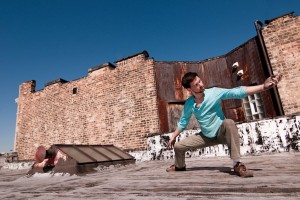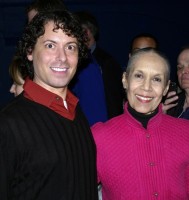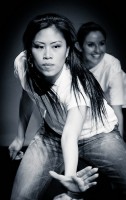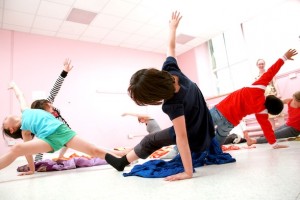How and where do dancers or choreographers enter the creative process? This K-12 educator uses imagery and conversation to help her middle school dance students understand and explore this question.
Dance Choreography
Dance Your PhD: Choreographer/Bioengineer Christopher Knowlton explores knee replacement through dance
What was once a little known video contest for PhD students to explain their research through dance has blown up into a full-scale online dance film fest. Dance Your PhD makes science accessible and understandable to everyone, communicating complex ideas, without watering it down or shutting the rest of us out. Lauren chats with Choreographer/Bioengineer Christopher Knowlton about how he’s combined his two worlds to create a dance film about knee replacement for the Dance Your PhD contest.
Bessie’s Back
Undoubtedly, the most exciting moment of the evening was Ms. Sexton and Mr. Mizrahi recognizing the ensemble members of Paradigm with a Bessie for “(bringing) into vibrant focus the essence of what it means to dance.” Honored were Artistic Director Gus Solomons Jr. (who called for the tripling of the size of the Bessie committee, to be able to include more works in the selection process!), Carmen deLavallade, Dudley Williams, Valda Setterfield, Michael Blake, Hope Clark, and Keith Sabado.
The Truth About Well-Rounded Dancers
Experience and exposure in a variety of dance styles is important for creating versatile dancers and may even be a necessity for aspiring professionals. Being well-rounded in dance is a good thing. Exposure to different dance forms, starting at a young age, is a great thing. So where’s the myth? It lies in the misplaced emphasis on experience and omission of training.
Unifying Women and Mothers Through Dance
I knew also that she was employed as a dance teacher in Scotland, doing a job very much the same yet also very different from that of many dance instructors. She will tell you more about this work in her own words but I feel it speaks to the affect dance and movement can have on the soul and on a group of people. Occasionally, I like to step away from the technical, instructional, business, and material side of dance to remind myself and those reading of the unifying and universal power of dance. As Camille will reiterate, I hope this reminder will encourage those of us who hold keys to find their own unique ways of unlocking this potential in dance.
From Page to Screen to Classroom
In 2004, Houston Dance Critic Molly Glentzer in her review of the book for Dance Magazine stated, “Li’s tenacity is an inspiring lesson to any reader, dancer or not. It’s the stuff of which great movies are made. Expect this one soon, and bring Kleenex. But read the book first.” A handful of years later, Li’s story is now a motion picture. It has already done well in Australia but unfortunately distribution in the U.S. is still speculative.






